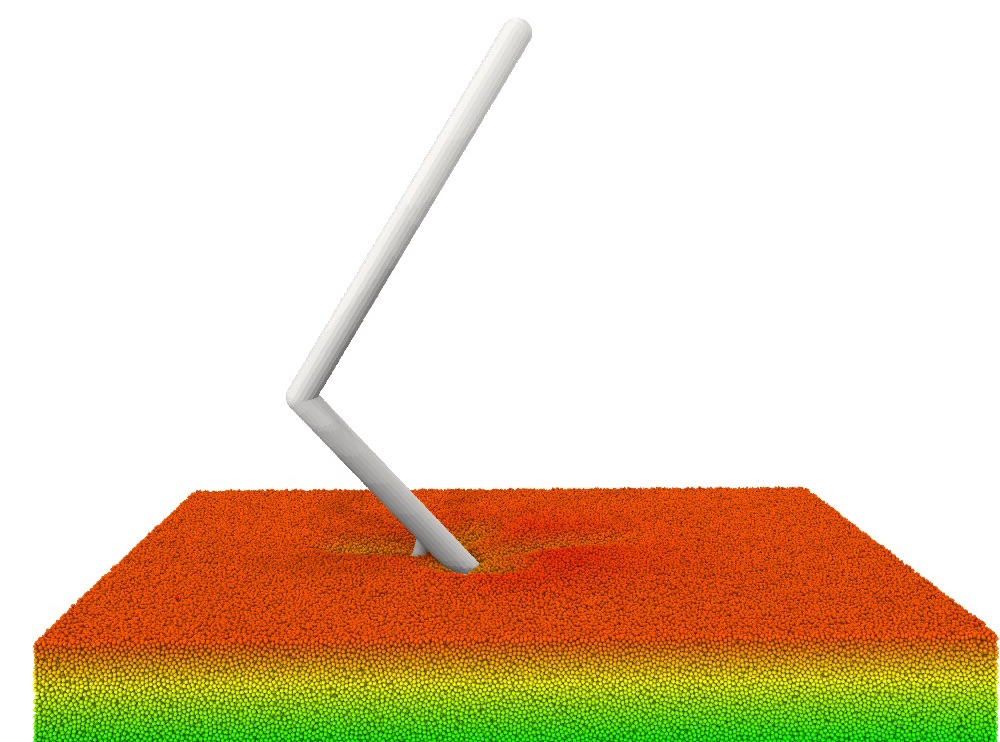In an effort to improve our understanding of preserved dinosaur tracks and their formation, American and British researchers used X-ray video techniques to record how a a guniea fowl (a family of birds in the Galliformes order) leaves its prints.
The reason why scientists investigated the tracks made by this particular bird is because birds are directs ancestor of dinosaurs and of a similar size to the Corvipes lacertoideus, which left behind tracks in some sediment approximately 250 million years ago in the northeastern United States.
The researchers noted that the choice of a guinea fowl was somewhat arbitrary.
“They are small dinosaurs without a tail, and that makes them a fantastic correlate for looking at the footprints produced by dinosaurs and produced by birds,” Falkingham said.
A video was made of the guinea fowl trotting through a soft bed filled with poppy seeds (which act in a similar manner to sand) to create a model of how the tracks are created.
The researchers were able to observe how the bird’s foot plunged into the seeds, which is thought to be similar to how dinosaurs would have sunk their feet into dirt or soft sand.
The researchers found that the guineafowl’s feet plunged to a depth of roughly 1.9 inches (5 centimeters) into the poppy seeds, which is nearly equal to the length of the bird’s feet.
Around 0.4 inches (1 cm) below the surface the impression of the bird’s foot was preserved in very good detail.

A simulated image of a guineafowl plunging its foot into sediment drawn from an X-ray video of the bird running through poppy seeds. The poppy seeds are color-coded by layer so that researchers can track their individual movements as the track forms. Credit: Peter Falkingham

A simulated guineafowl foot withdraws from a bed of dry sediment. From the surface, the resulting print looks like an indistinct impression. Underneath, however, surprising details are preserved. Credit: Peter Falkingham
Study author Peter Falkingham, a research fellow at the University of London’s Royal Veterinary College, said that the new video “is the first time anyone has been able to see a footprint being formed,”
“It just happened to be both available and the right size to fit in the X-ray machine,” said Falkingham.
“The simulation shows us that as the foot comes out, it comes out in the middle of the track and it pulls sediment upwards while it does so,” Falkingham said. “So these are actually exit traces from the foot.”
“It’s a really cool thing,” he said. “A dinosaur walked through here, and the way that its leg moved changes how the footprint looks.”
Falkingham told Live Science that dinosaur prints are the only direct record of dinosaur movement but they are very hard to interpret.
There’s been a lack of knowledge about the interaction between a creature’s foot and a specific substrate.
Generally speaking tracks made in soft substrate are usually better preserved, however, there is a complexity about their formation as the creatures leaving footprints in soft substrates first have to plunge into the surface and then pull the foot out. Falkingham said that prints are static impressions, but a moving dinosaur foot is dynamic.
A detailed X-ray video of a modern bird foot is revealing the secrets of dinosaur tracks set down more than 250 million years ago:
Reference:
“Secrets of Dinosaur Footprints Revealed in Bird X-Rays”, Live Science
Stephanie Pappas | Published: December 08, 2014 03:00pm ET

